Unlike heating, habitability codes do not require air conditioning. There may be local exceptions. Regardless, we must evaluate the AC present on the property, as it’s part of the SOP. Additionally, we are not serving our clients if we don’t note whether the AC is reasonably distributed or not. In this section, we will look at AC-only split systems, heat pumps, ductless “mini-split” zone installations, and evaporative coolers. Window units are not permanently installed and are outside of the scope. Inspection is a courtesy.
Refrigerant-based AC should not be operated when outdoor temperatures are below 65° F. This can cause permanent damage to the compressor. Use the appropriate Limitation Statement. If the home’s interior is hot and humid, it may take 30-60 minutes before you can measure the Delta-T properly. Consider whether the home can get reasonably cool overall. Be sure to check for mismatches between the inside and outside unit capacities, and for significant system size disparities compared to the home’s square footage. Be alert to supplemental zone units where central cooling is provided.
The 2nd. law of thermodynamics tells us, simply put, that “heat moves towards cold.” This is why air conditioners work. In compressor-based AC, refrigerant is manipulated to produce very cold coils in the air handler. The warm, moist house air is drawn across these coils to shed its heat into the refrigerant. Cold air holds less moisture than warm air; the humidity condenses back into liquid and is drained away. The result is cool, dry air that’s delivered to the supply ducts. The refrigerant, now hotter, is carried to the exterior unit’s coils to be dumped into the cooler outside air. Then the cycle starts all over again.
Don’t operate the system when it’s below 65° F. outside. Compressor-based AC should provide a Delta-T between 14-22° F. Use the data plates to confirm that the interior unit’s capacity is equal to or slightly larger than the exterior’s; never less. A broad rule of thumb is that a ton of cooling capacity (12K BTU) is needed to serve 400-800 square feet of house. Use this to determine if the system is grossly over or undersized. A 5 ton system is too big for a 1,500 sf home. The system will cool the air and shut down before it can dehumidify. Short-cycling and a cold, clammy interior is the result. It’s likely the system will fail prematurely.
The temperature differential is too low. This “Delta-T” is the temperature difference between the supply and return air. The proper range is 14F – 22F. Hire an HVAC contractor to evaluate the system and to make required repairs.
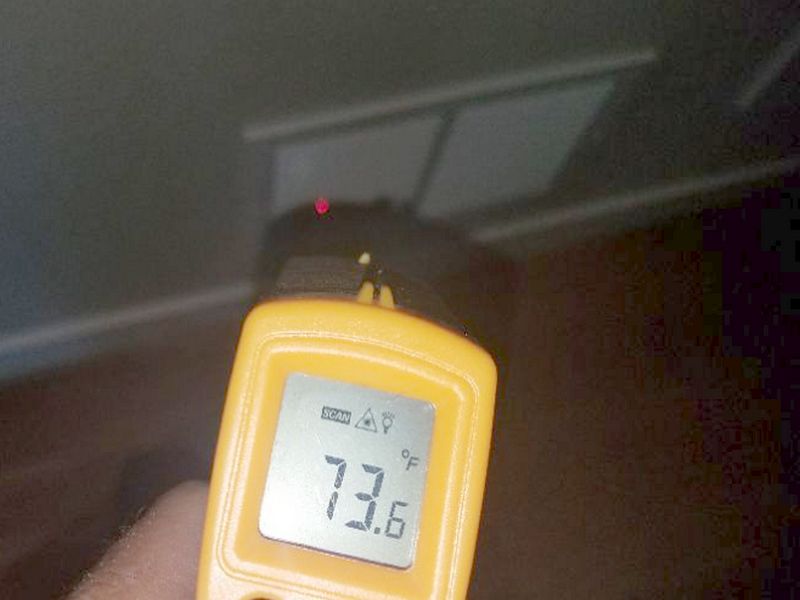
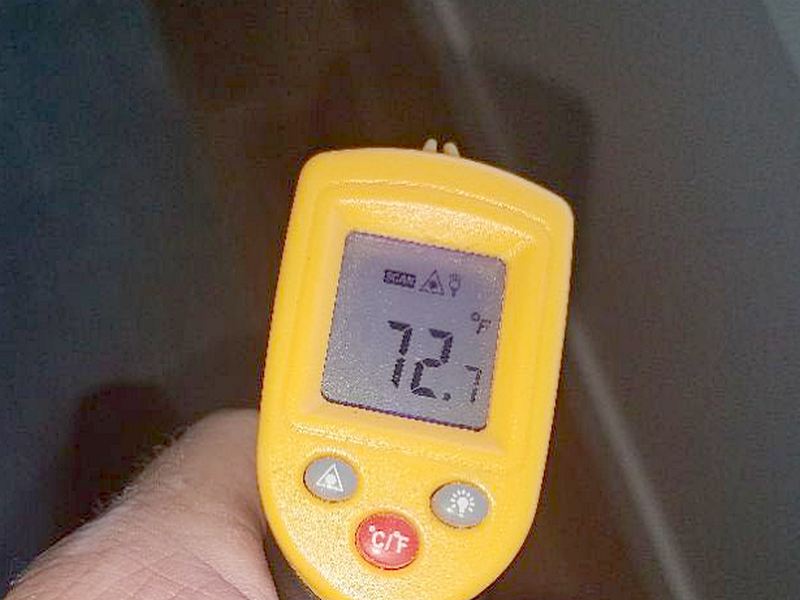
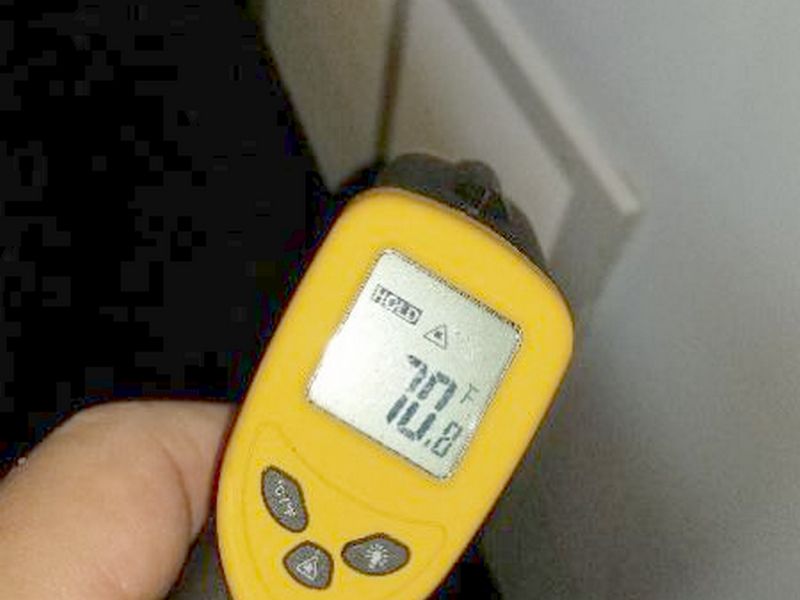

The temperature differential is too high. This “Delta-T” is the temperature difference between the supply and return air. The proper range is 14F – 22F. When significantly higher this implies a low fan speed, dirty filter or coils, or a possible temporary repair. Hire an HVAC contractor to evaluate the system and to make required repairs.
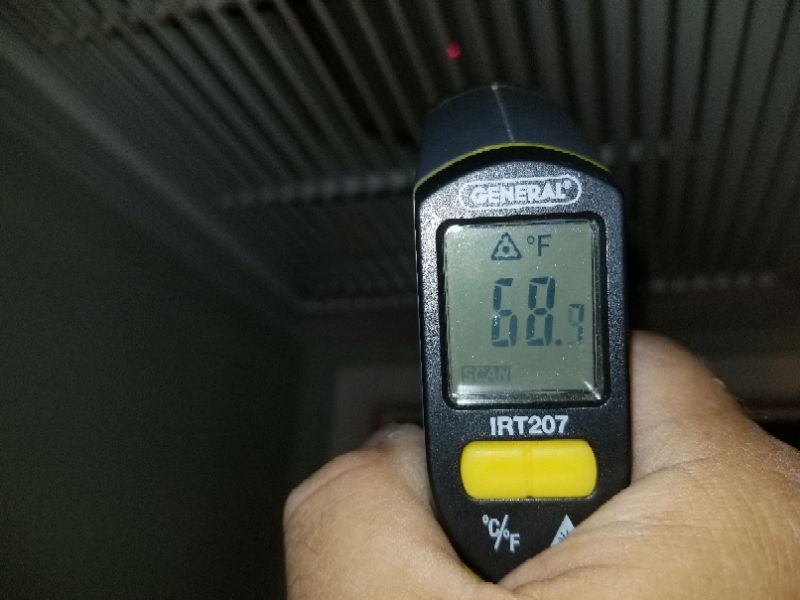
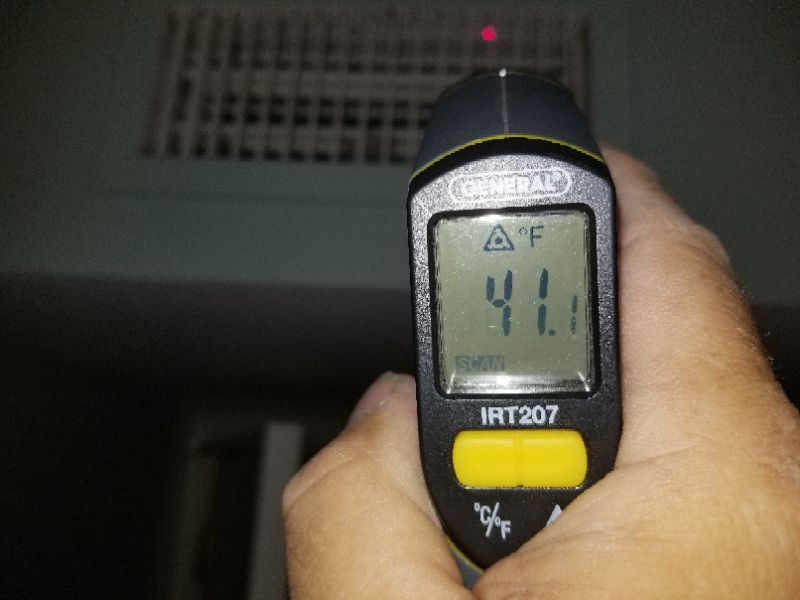
The AC’s air handler coils are dirty. This affects efficiency and air quality. Hire an HVAC technician to clean and service the system.
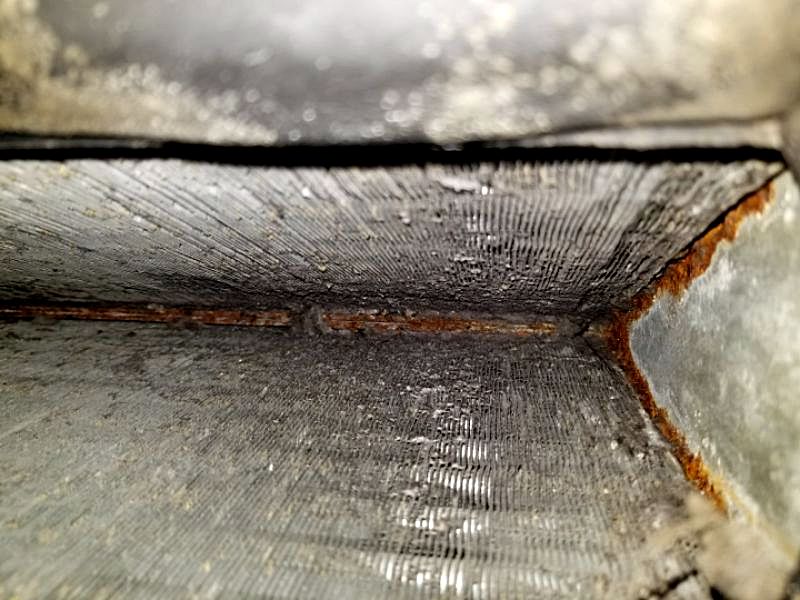
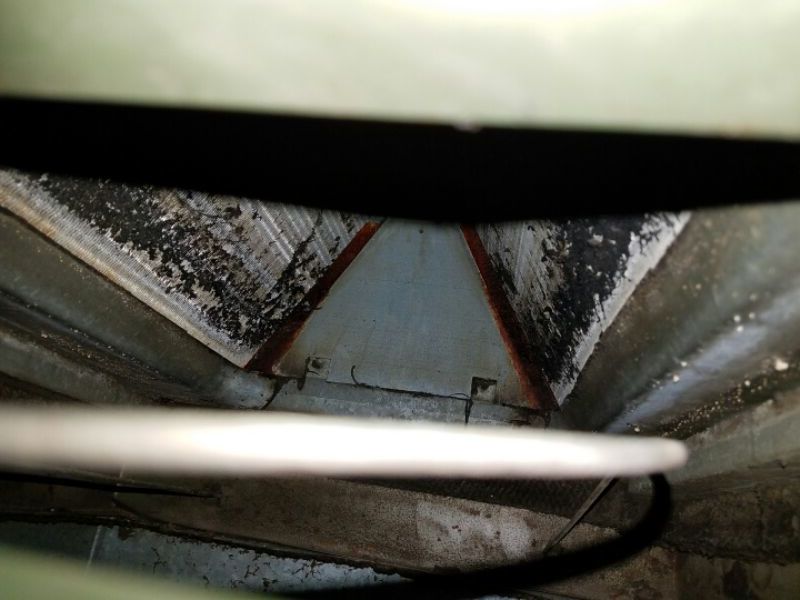
There is an improper match between the air conditioner’s interior and exterior components. The interior’s capacity should match or be 1/2 to 1 ton larger than the exterior. Hire an HVAC contractor to evaluate the system and to make required repairs.

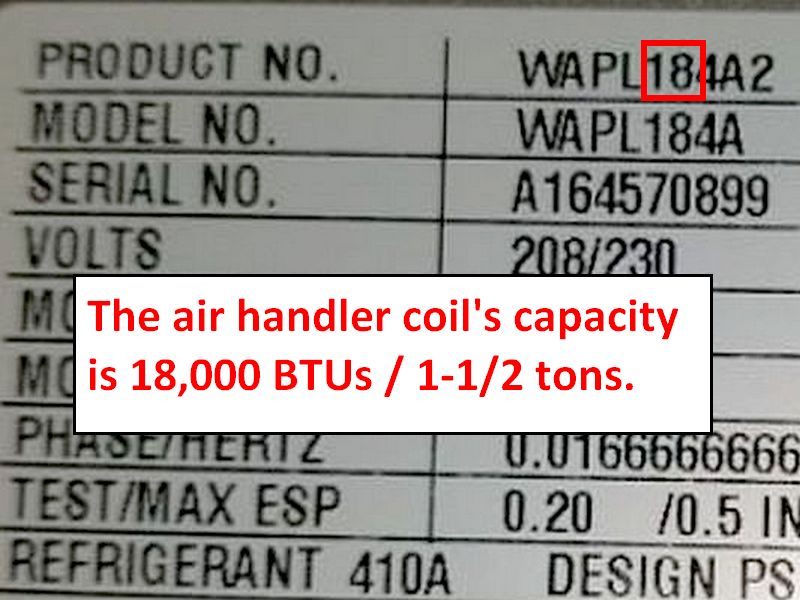
There is supplemental air conditioning present for an individual room. It is not known if the unit was installed for personal comfort reasons, or due to inadequate coverage (possible undersized system). Hire an HVAC contractor to evaluate the system and to make required repairs.
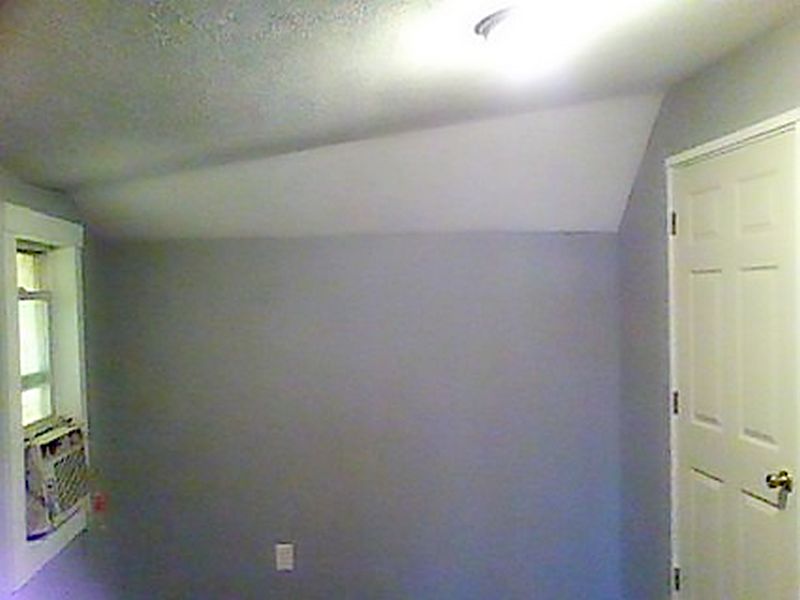
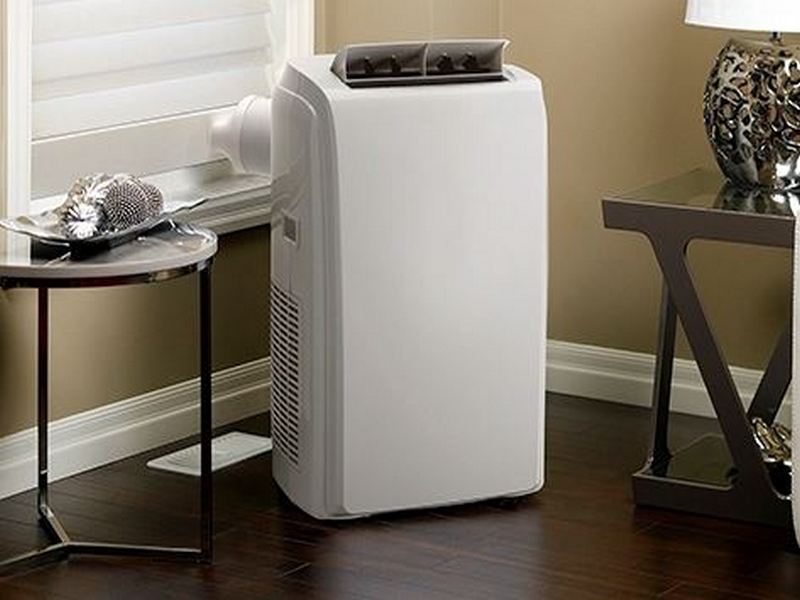
The insulation is damaged or missing at the air conditioner’s suction line. This affects the system’s efficiency. Install an exterior-grade pipe insulation on the suction line.
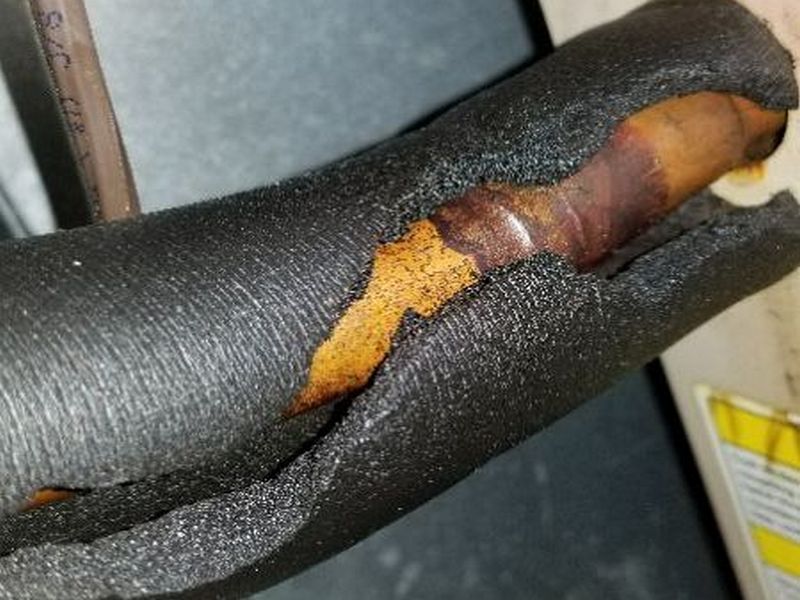

These are air conditioners that, as the name implies, do not have distribution ducts. They are designed to condition a limited zone. While we are looking at their cooling here, most are actually heat pumps. The air handler is mounted on the wall of the room being served rather then delivering air from a central location via ducts. Only the refrigerant lineset penetrates the exterior wall, and connects to a small compressor. There are compressor models that can power 2 or 3 air handlers. Mini-Splits are very popular for conditioning additions or renovated spaces where duct work isn’t practical. The air handler units are usually placed high on the wall and are operated by a remote control.
Inspect these systems much the same as you would a split-system AC. Set to cooling when it’s above 65° F. outside. Obtaining a Delta-T is a bit trickier as the supply and return are both on the wall unit. Labels on the interior portion may be hard to see, but you should attempt to capture the inside and outside data plates and check that the capacities match. Be alert to any signs of condensate leakage, which would likely occur in the wall below the air handler.

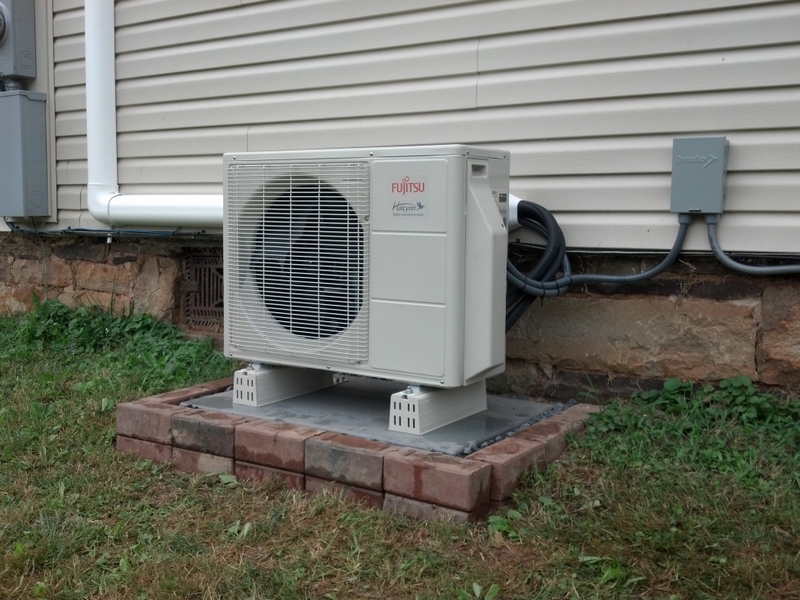
Evaporative coolers, used in arid climates, work by harnessing (surprise!) evaporative cooling. This is the same phenomenon that we rely on in our Infrared Inspections to visualize the presence of hidden moisture. Heat must be absorbed to make liquid water change state into a vapor. As the molecules become suspended in the air, they draw more heat from the surrounding hot air, cooling it in turn. Evaporative coolers optimize this process. A water supply is circulated over special porous pads or coils that provide high surface area for a fan to blow hot, dry, outdoor air over. While ducts may be a part of the installation, systems rely on displacing the warm dry house air with cooler, moister air. As refrigerant-based AC dehumidifies the indoor air, running both types of systems at the same time would be counterproductive.
A clean system is essential to avoid odors and indoor health issues. The nickname “Swamp Cooler” doesn’t come because of where they’re used; they won’t work in a hot, humid swamp. It’s probably because of how your house will feel and smell with a neglected unit. Inspect for overall condition, including deterioration, proper support and drainage, clean evaporator pads and coils, and leaks. Always perform an IR scan in the interior around the system.
There is no overflow drain for the evaporative cooler. This can allow water damage to the interior and exterior of the house. Hire an HVAC contractor for repairs as needed.
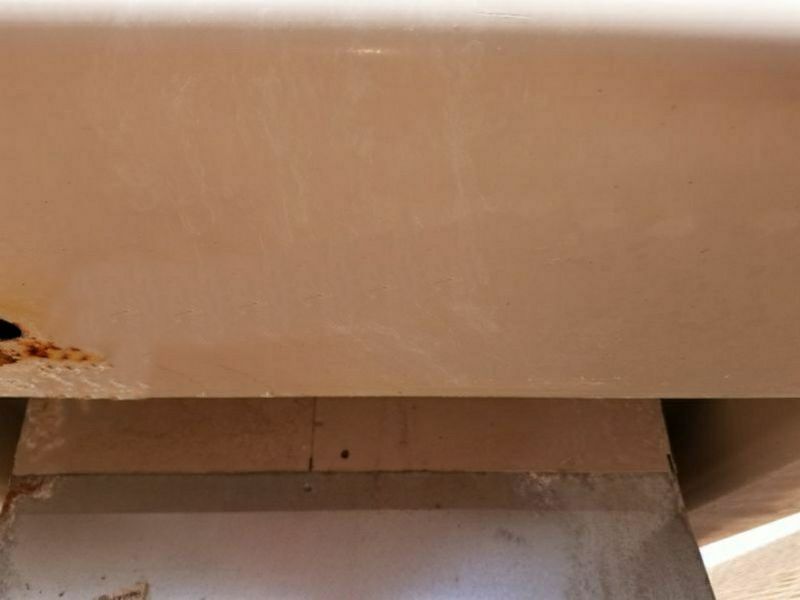
The evaporative coil is dirty. This can affect efficiency. Hire an HVAC contractor to clean and service the system as needed. A filter should be installed.
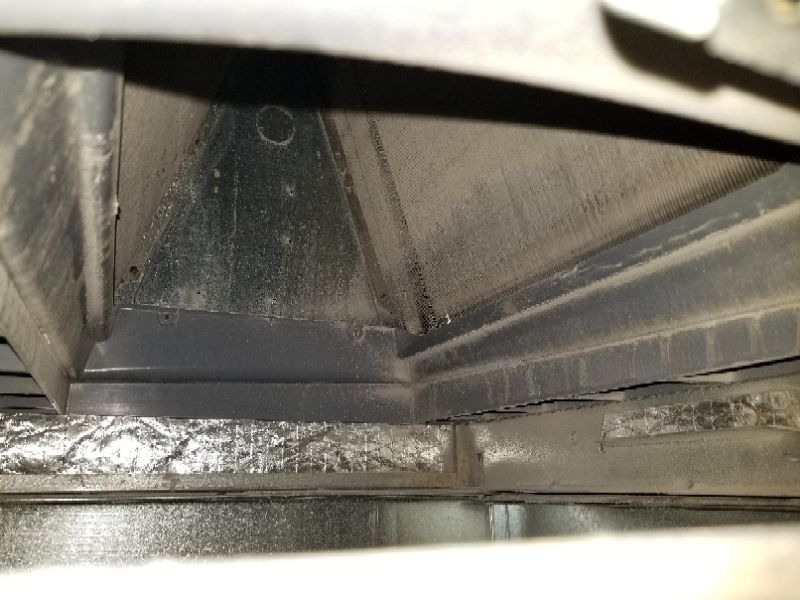
The evaporative cooler is rusted and deteriorated. This implies diminished reliability. Hire an HVAC contractor for repairs as needed.

The water connection for the evaporative cooler is leaking. This will waste water and can cause damage. Hire a contractor for repairs as needed.

There is no flood pan under the evaporative cooler’s coil. This can allow moisture damage. Hire an HVAC contractor for repairs as needed.
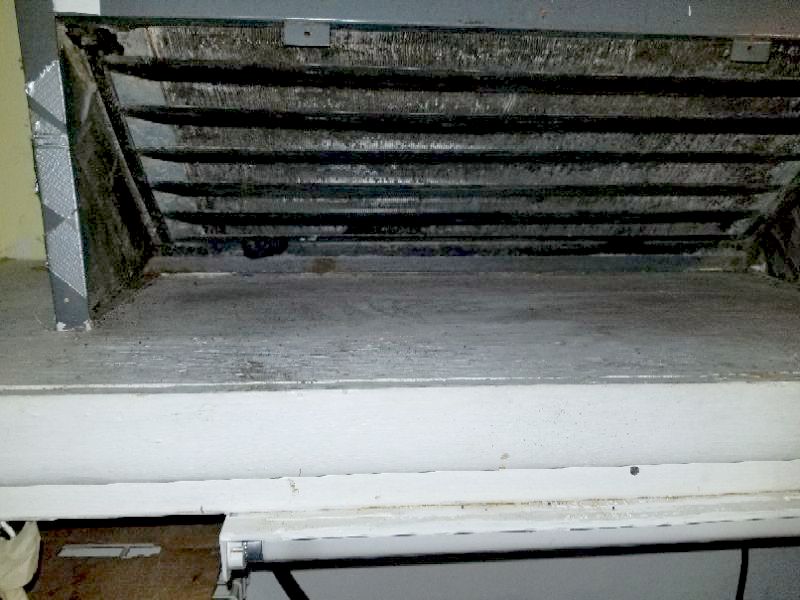
The outside temperature is too cold to operate the cooling system. Most manufacturers caution that running the AC when it is below 65ºF can damage the system. Therefore, the cooling system is only inspected visually.
HVAC exterior components are inaccessible, which prevents inspection.
The air handler is inaccessible, which prevents operation and inspection.
The service access cover is sealed. Therefore, the inspection is limited.
Parts of the cooling system appear to be maintained by local association and, therefore, are not inspected.
The cooling system appears to be shared with other units. Therefore, the inspector is unable to determine responsibility for operation and maintenance.
The cooling system is near or at the end of its useful life. We recommend establishing a budget to replace the cooling system.
The cooling system is past the end of its useful life. We recommend establishing a budget to replace the cooling system.
A heat pump is a compressor-based HVAC system that provides both heating and cooling. Please refer to the appropriate Heating System for details on your unit. Heat pumps are only checked in either the heating or cooling mode, depending on the exterior temperature. This is done to prevent damage to the appliance.
The age of the cooling system is an estimate. The exact age cannot be determined because the data plate is missing or does not provide the required information.
The interior and exterior HVAC units appear to be different ages. Determining which parts of the system have been upgraded is beyond the scope of this inspection. Consult with the owner or an HVAC contractor to determine what work has been performed.
This system predates revised Department of Energy standards for efficiency. As manufacturers cease or curtail the older production lines, spare parts support and the now-obsolete refrigerant gases will likely be more expensive. If an extremely high efficiency replacement is desired, they may not be compatible with air handlers and duct systems designed for the older less efficient units. I advise you to budget accordingly.
